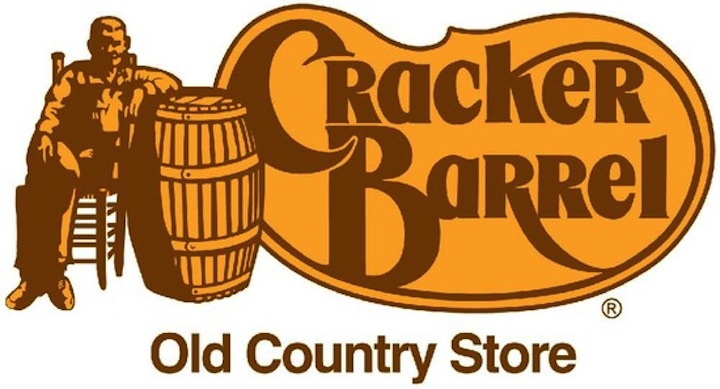*Featured image was found here and is being used for the purpose of news reporting. I do NOT own this image.
Man, oh man, do I love Cracker Barrel. It is absolutely one of my favorite restaurants to peruse and eventually eat in. I love their grilled lemon pepper rainbow trout fillet, hash brown casserole, and mashed potatoes. I love their gloriously formed buttermilk biscuits, and their orange cream soda that comes with a cold, frosty mug. I love that their coffee comes with a plain little white mug that softly suggests a simple living. I love their famous pancakes and syrup… pancakes that I simply cannot figure out how to replicate at home. I love their free to enjoy rocking chairs and begging my wife to play a game of checkers with me, whilst we rock in them. I love their real fireplace in the winter, and I love their old timey decor. Of course, I love trying to leave just one peg in that triangular game that consistently taunts me with the words “just plain dumb.”
As a seasoned content-marketer, do you know what I don’t love? Marketing blunders so huge they necessitate being labeled with #fail (in this case, #HashBrownFail).
If you are wanting to discuss the Phil Robertson vs. Social Media controversy itself, you are in the wrong place. Don’t you cause no derailin’ in my comment section, now, ya hear? This post is for the purpose of pointing out what many may have overlooked during all the mouth-foaming anger of the event; a marketing blunder that placed Cracker Barrel into the four-pegs or more remaining category, called “EG-NO-RA-MOOSE.”
First, I feel the need to challenge the steadfast adage that bad publicity is still good publicity. Before social media, internet, widespread video and photo capturing technology, etc., I think this may have been universally true. However, in the age of Facebook and Twitter, I think it has become a half-truth. Bad publicity can simply be bad.
If your goal is awareness, bad publicity can be very beneficial for you, but if you are a well-established business, I think you now need to be aware that social media makes mass organization and group mobilization easy. Through content-marketing, people like me can use this to our advantage to grow a brand, but using it to make a political or other kind of non-business-related statement, you had best make sure that you are representing your company’s actual demographic; as opposed to the demographic you wish it would be.
There are all kinds of tools at our disposal for analyzing social media demographics, website traffic, etc. Some of these tools cost money and some don’t. A large company like Cracker Barrel usually has someone whose soul salary position is dedicated to analyzing these metrics, studying the company’s customers’ interests, locations, ages, etc., and using that information to implement campaigns to reach new customers and grow the brand.
In the curious case of Cracker Barrel, the metrics really aren’t very necessary for understanding who the company’s demographic is. You walk into a Cracker Barrel, and some of the first sights are senior citizens and words like “ole” on products. So, what happened? How did they show up on a radar they had no business even appearing on?
Honestly, I think Cracker Barrel fell victim to the new adage that whoever has the loudest voice wins. The actual numbers suggest that supporters of the LGBT debate might be in the minority in our country. Regardless, we can all agree that they are certainly in the minority in the South. But one thing they are is L-O-U-D. Social media has made the loudest voice the one that can push an agenda; not the majority. Really, social media is great at making you believe that the loudest voice is equivalent to the majority.
So, what I think is that Cracker Barrel had a momentary lapse of demographics-evaluative wisdom and reacted impulsively to the social media explosion. They heard the noise and thought it represented the majority. Then, they fell victim again, this time to the loud voice of their paying customers threatening to leave and never return; a voice they were wise to listen to.
All of this served to waste Cracker Barrel’s resources, tick off a lot of their customers, and create a marketing blunder so severe that I don’t remember seeing one like it since the Netflix price increase. I just can’t see any good that this move may have accomplished for Cracker Barrel. They took a situation they were not a part of, impulsively dove in, and must now recover from the error.
So, for you other business owners and marketers out there, I think the takeaway is to pay attention to the demographics of your customers. If you want/need that to change, realize that it will be a slow process, but you should never guide your business decisions by what is making a big media splash because although it is very loud, your customers may be polarized to a side that the majority/minority of the country is not.
Can you think of any other examples of this happening to a company?
